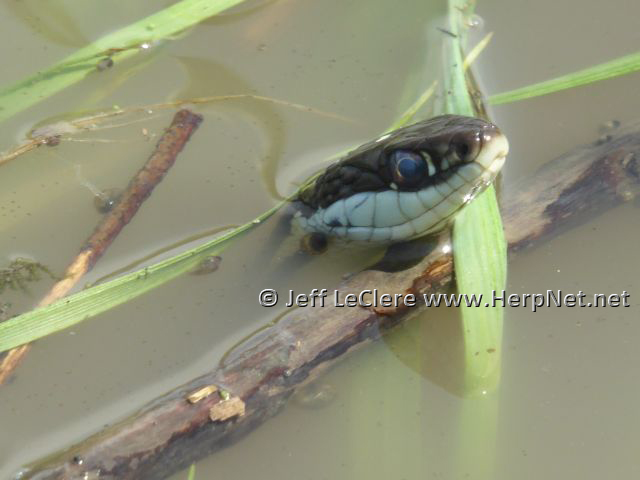Western Ribbon Snake (Thamnophis proximus)
Alternate names: Western Ribbonsnake
by Jeff LeClere
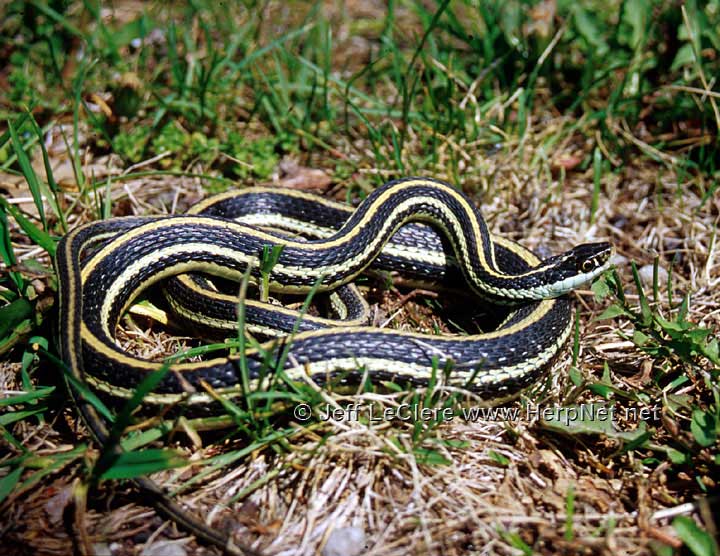
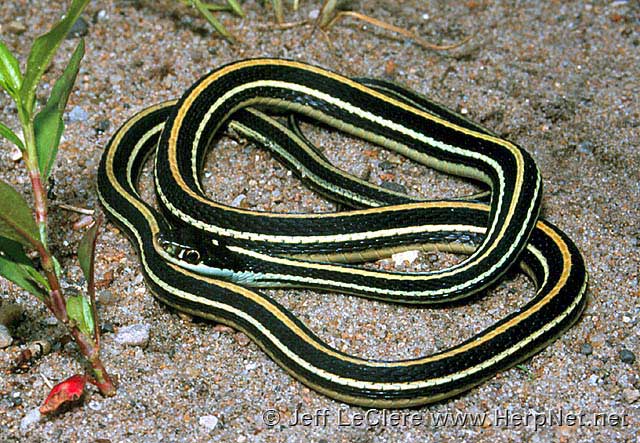
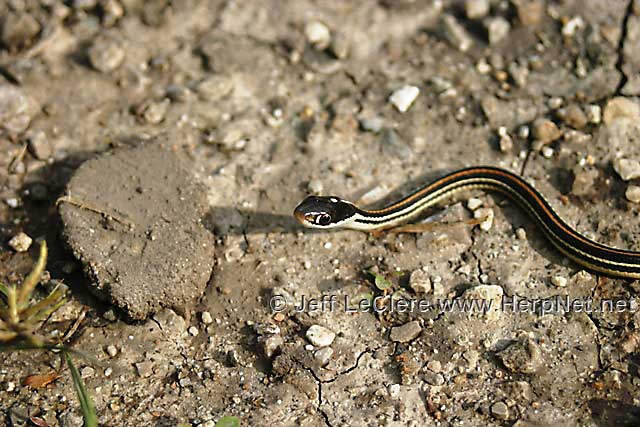
Status
UNPROTECTED and Species of Greatest Conservation Need. Western ribbon snakes are afforded no protection in Iowa. They are rather uncommon compared to the other garter snake species found in Iowa. We are looking for reports of western ribbon snakes in northern Iowa.
Description
Harmless to humans. The western ribbon snake is a medium sized Iowa snake measuring 20 – 30 inches in length (Conant and Collins, 1998). The ground color is black with white, or mint green skin between the scales. There are three longitudinal stripes. The dorsal stripe is usually orange. The lateral stripes are cream to yellow and are located on the third and fourth scale rows. The belly is immaculate white, rarely yellowish or greenish. The head is brown or black with two small yellow dots the parietals scales atop the head (these two spots touch each other) and no dark black bars on the labial scales.
The tail is about 1/3 the total length of the snake. The scales are keeled and the anal plate is single. The common garter snake has lateral stripes on rows two and three. The plains garter snake has black bars on the labials. Both the common and plains garters usually have yellow dorsal stripes and their tails are much shorter than 1/3 the total length.
Subspecies
The subspecies found in Iowa is the orange-striped ribbon snake, Thamnophis proximus proximus.
Range
The western ribbon snake is basically found in the southern half of Iowa.
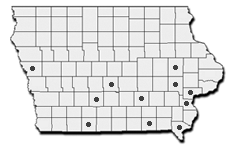
- Range map for the western ribbon snake in Iowa

Habitat
The western ribbon snake is the most aquatic of the garter snakes found in Iowa. They are always associated with ponds, marshes, sloughs, rivers, and lakes. Most of the time they are fairly close to water, although a specimen I found crossing a road in Van Buren County was nowhere near any apparent water.
Habits
This is a diurnal, active snake that is more aquatic than our other garter snakes. Western ribbon snakes are one of Iowa’s quickest snakes and specimens on the move on a hot day are difficult to catch. When alarmed, they are just as apt to enter water than take cover on land. Instead of diving, they skirt effortlessly across the top of the water. When captured they expel musk and thrash wildly about, but are less likely to bite than our other garters. They are active thermoregulators and will alternately hunt and bask throughout the day. They climb well and may be seen in bushes or shrubs next to the water. They take refuge underneath logs, rocks, boards, and in mammal burrows.
They breed in the spring and the young are born alive in late summer or autumn. There may be 10 – 30 or more in a litter, the average is 12. The young are identical to the adults and are 5 – 8 inches in length. They may overwinter with other species of snakes and use any place they can get below the frost line. Road embankments, mammal burrows, old bridges, and crayfish burrows are common hibernacula. These snakes may be seen crossing roads in October as they migrate to their hibernacula.
Food
Fish, frogs, toads, salamanders, and earthworms are consumed. They eat their prey without constriction, thus they have strong jaws to overpower their prey.
